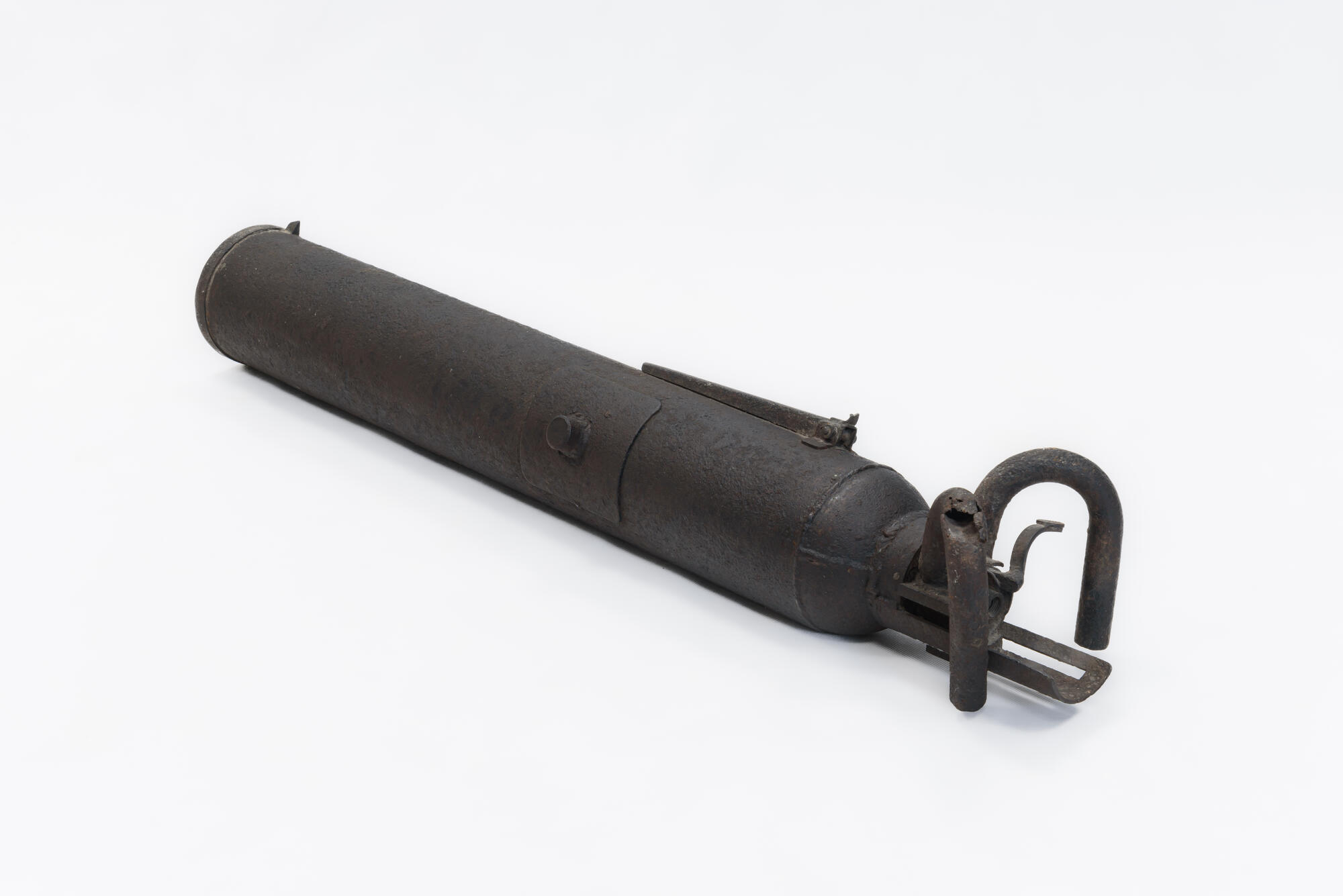The available information about the ampulomet, or ampoule launchers of the Red Army is extremely scarce and is mainly based on a couple of paragraphs from the memoirs of one of the defenders of Leningrad, as well as on a description of their design in the ampoule launcher manual, and on some conclusions and general speculations of modern amateur diggers.
Among incendiary weapons of the Red Army ground forces, the ampoule launcher stood between backpack flamethrowers (man-portable flamethrowers), which could hit targets at short distances with a jet of liquid fire, and field artillery weapons (gun and rocket artillery), which occasionally fired incendiary shells with solid incendiary materials, for instance, a thermite mixture of type “6” for military uses. According to its developers, the ampoule launcher was mainly intended to engage tanks, armored trains, armored vehicles and fortified enemy positions by firing at them with any projectiles of a suitable caliber.
The 125mm ampoule launcher passed field and military tests in 1941 and was adopted by the Red Army. The ampoule launcher consisted of a barrel with a chamber, a breechblock, a firing mechanism, sighting devices and a mount with shooting sticks. The barrel of a mass-produced ampoule launcher was a one-piece steel tube made of Mannesmann-type rolled steel with an internal diameter of 127 mm, or rolled from a 2-millimeter-thick iron sheet, plugged in the breech part. The barrel of a standard ampoule launcher rested freely by the trunnions on the shooting sticks of a wheeled mount for summer or of a winter-appropriate mount with skis. There were no horizontal or vertical aiming mechanisms.
In the mass-produced ampoule launcher, the firing mechanism was simplified, as many parts were made by stamping, and the trigger lever was moved so that it was under the thumb of the right hand. Moreover, the handles during the mass-production process were replaced with steel tubes curved like ram horns to structurally unite them with the interrupted screw.
The main ammunition for ampoule launchers were AZh-2 tin ampoules (glass spheres) with a caliber of 125 mm that were filled with a self-igniting variety of condensed kerosene known as KS. The first tin spheres entered mass production in 1936. In factory documents, they were called AZh-2 aviation liquid ampoules. But it is still more correct to call them tin ampoules, since the Red Army Air Force planned to gradually replace the AK-1 glass ampoules, which had been in service as chemical munitions since the early 1930s.
Among incendiary weapons of the Red Army ground forces, the ampoule launcher stood between backpack flamethrowers (man-portable flamethrowers), which could hit targets at short distances with a jet of liquid fire, and field artillery weapons (gun and rocket artillery), which occasionally fired incendiary shells with solid incendiary materials, for instance, a thermite mixture of type “6” for military uses. According to its developers, the ampoule launcher was mainly intended to engage tanks, armored trains, armored vehicles and fortified enemy positions by firing at them with any projectiles of a suitable caliber.
The 125mm ampoule launcher passed field and military tests in 1941 and was adopted by the Red Army. The ampoule launcher consisted of a barrel with a chamber, a breechblock, a firing mechanism, sighting devices and a mount with shooting sticks. The barrel of a mass-produced ampoule launcher was a one-piece steel tube made of Mannesmann-type rolled steel with an internal diameter of 127 mm, or rolled from a 2-millimeter-thick iron sheet, plugged in the breech part. The barrel of a standard ampoule launcher rested freely by the trunnions on the shooting sticks of a wheeled mount for summer or of a winter-appropriate mount with skis. There were no horizontal or vertical aiming mechanisms.
In the mass-produced ampoule launcher, the firing mechanism was simplified, as many parts were made by stamping, and the trigger lever was moved so that it was under the thumb of the right hand. Moreover, the handles during the mass-production process were replaced with steel tubes curved like ram horns to structurally unite them with the interrupted screw.
The main ammunition for ampoule launchers were AZh-2 tin ampoules (glass spheres) with a caliber of 125 mm that were filled with a self-igniting variety of condensed kerosene known as KS. The first tin spheres entered mass production in 1936. In factory documents, they were called AZh-2 aviation liquid ampoules. But it is still more correct to call them tin ampoules, since the Red Army Air Force planned to gradually replace the AK-1 glass ampoules, which had been in service as chemical munitions since the early 1930s.





